Our first day on the CMI tour – the Giza plateau and Sakkara necropolis. First stop to see the step pyramid of Djoser and the Funerary Temple and the Pyramid of Unace and also the tomb of Shesheshet Idot.
The most spectacular and well preserved discoveries in Egypt are now being made at Saqqara outside the main tombs. Burials occurred here from the Old Kingdom right through the Ptolemaic/Greek rule of Egypt, a span of some 2,000 years. Recent discoveries have shown that a huge industry existed here, where one could basically pay a ‘burial company’ that would mummify you and your family, build your coffins, dig a deep pit for your tomb, and bury you close to royalty in the hope that you might receive some good fortune in the afterlife. During one excavation now called the ‘dog catacomb’, close to eight million animal mummies were discovered. Dogs were used as offerings, promising a good afterlife, and they are highly represented among the many other species found here, including one baby lion.
The funerary temple at Saqqara represents the first time they built a large building using stone blocks instead of mud bricks. The barely visible joints between the blocks show the precision of their building.
Saqqara is most famous for the location of the first pyramid built in Egypt, the Step Pyramid of Djoser, a pharaoh of the 3rd dynasty. It was not as smooth-sided as the pyramids that followed, but it was designed by a very famous person—the Egyptian, priest, architect, physician, and vizier named Imhotep. He was so revered by later Egyptians that he was almost deified in the way that later pharaohs were. The Step Pyramid was made of limestone blocks and comprised six tiers (as they believed it took 6 hours of the day to meet the god of heaven). Prior to the construction of this pyramid, the Pharoahs (and many nobles) were buried in tombs known as mastabas (commonly understood in Arabic as ‘stone bench’). To confuse potential robbers, there are over three kilometres of underground tunnels underneath Djoser’s pyramid. Within the pyramid itself there are corridors that can be accessed for a small extra fee. They lead to a massive central shaft where we can look down at the huge sarcophagus of Djoser.
The Egyptian preoccupation with the afterlife is the main reason they left so much behind. Archaeologists frequently uncover new finds. To exist in the ‘next world’ they needed to continue to exist in this one, hence they preserved their bodies through mummification, engraved their names in blocks of stone and built images of themselves and mummified animals to take with them. The Egyptians created a plethora of gods that ruled the natural world including animals such as bulls, birds, cats, dogs, and even crocodiles.
The carpet school was colourful but I won’t forget the kids hands moving so quickly, jerking, as they wove the carpet threads.
Lunch was at a local restaurant where they had set up a large air conditioned tent, very welcome on this hot day. We were greeted by guys playing very noisy instruments, expecting a tip of course; fresh bread was baked in ovens by two ladies.
Next, the Giza plateau pyramids and the Great Sphinx complex. The great pyramid of Khufu, or Cheops in Greek, is the tallest pyramid of all built in 2580BC. He was the second pharaoh of the fourth dynasty; the only complete portrait we have of him as a 3 inch ivory figurine in the museum. The pyramid has eight sides, the only one, seen when the sun is that a specific angle; each side is slightly concave making it a true marvel of precision engineering. Three burial chambers inside including an unfinished subterranean chamber. It was built from about 2.3 million blocks transported from nearby quarries but the largest granite stones in the king s chamber weigh 25 to 80 tonnes, transported from Aswan 800 km south. The brilliant white limestone casing blocks were mostly dislodged in 1303 by an earthquake, and the blocks were then used in Cairo’s mosques and fortress.
Also on the desert plateau are the pyramids of Khafre (Chephren) and Menkaure (Mykerinus). These are the second and third largest pyramids. The Chephren pyramid was built on raised bedrock so it appears taller than his father Khafre’s pyramid. Mykerinus was the son of Chephren. Internal chambers are more complex than the others.
Several smaller pyramids in the complex are known as the Queens Pyramids but this is speculation.
The Sphinx is 73 m long traditionally associated with Khafre though some think it was his predecessor. It is cut directly out of the surrounding sandstone unlike Sphinx temple constructed from sandstone blocks quarried nearby.
Before dinner we had a talk on the engineering abilities of ancient Egypt by Rob Carter. The accuracy of their work is astounding – the massive stones have no gaps or mortar, absolutely flat surfaces and square edges. Moving individual stones of many tonnes is thought to be possible using water run on the leading edge to reduce friction – similar to sweeping in front of the curling sport stone.
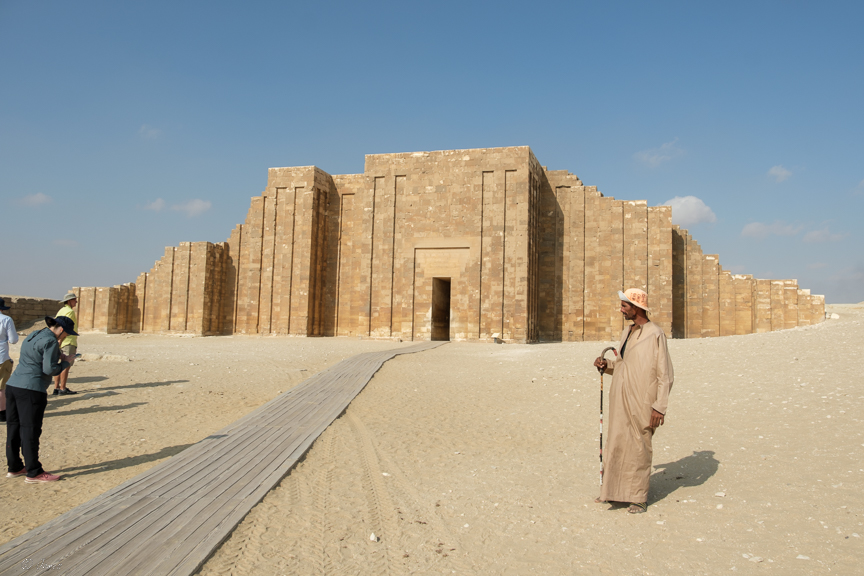

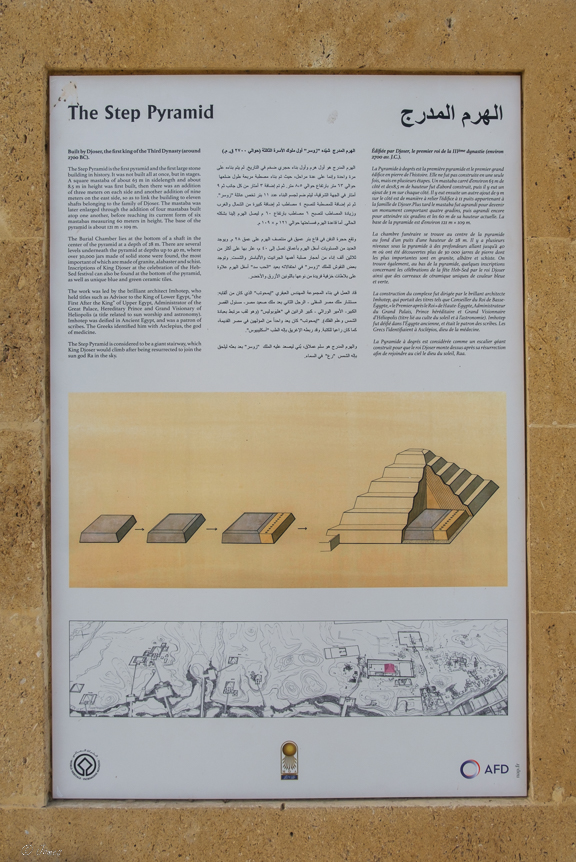

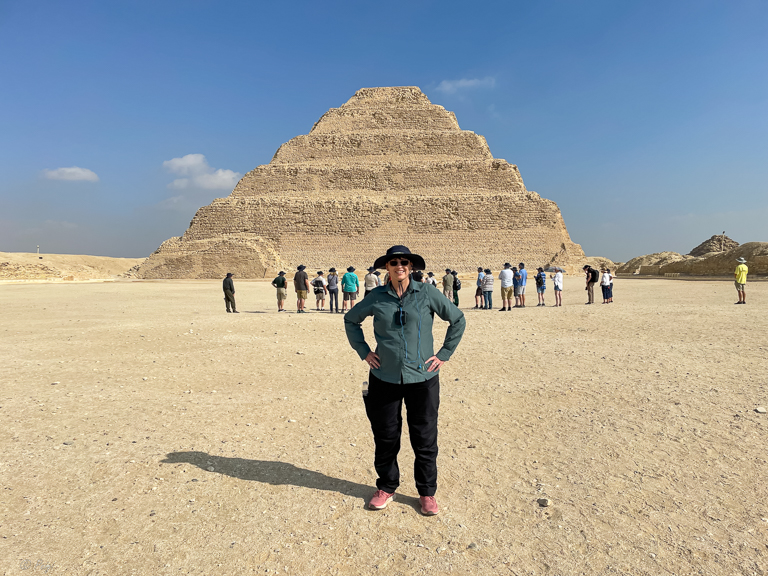













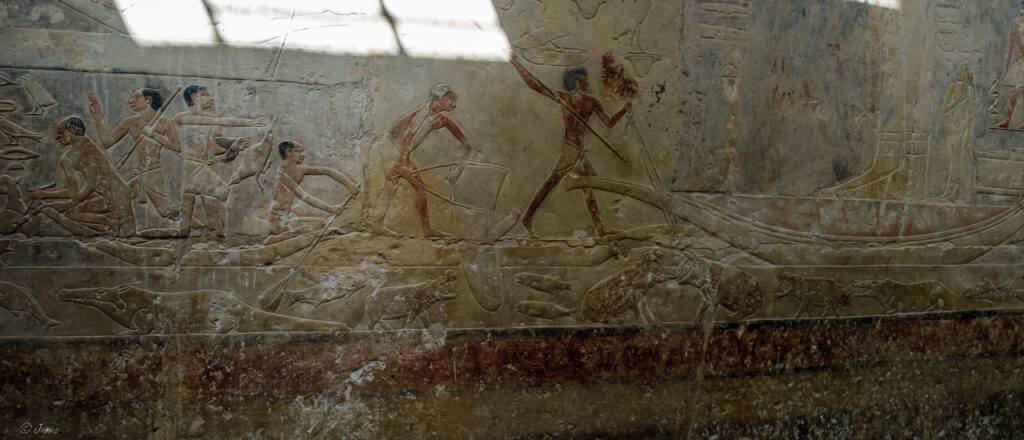
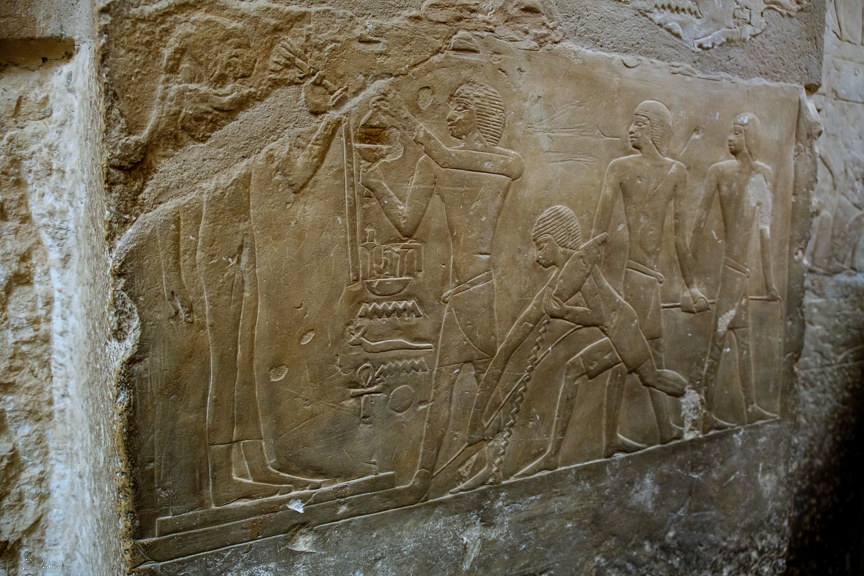



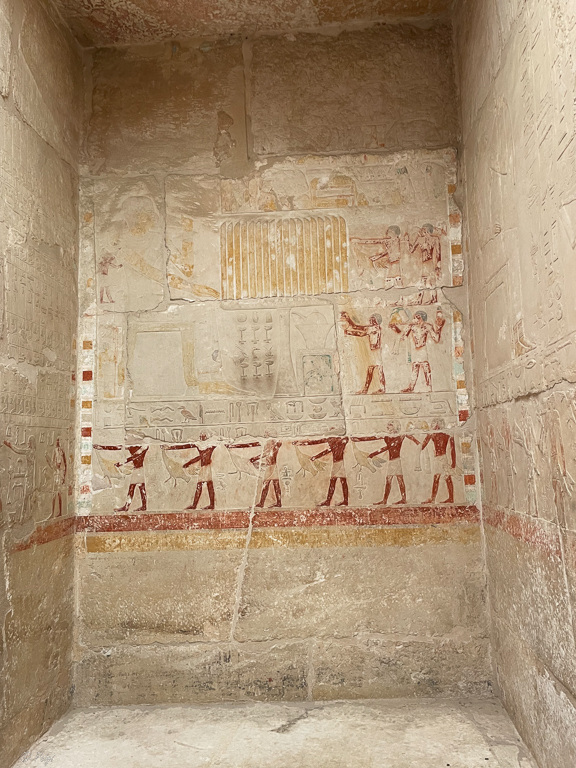










Giza

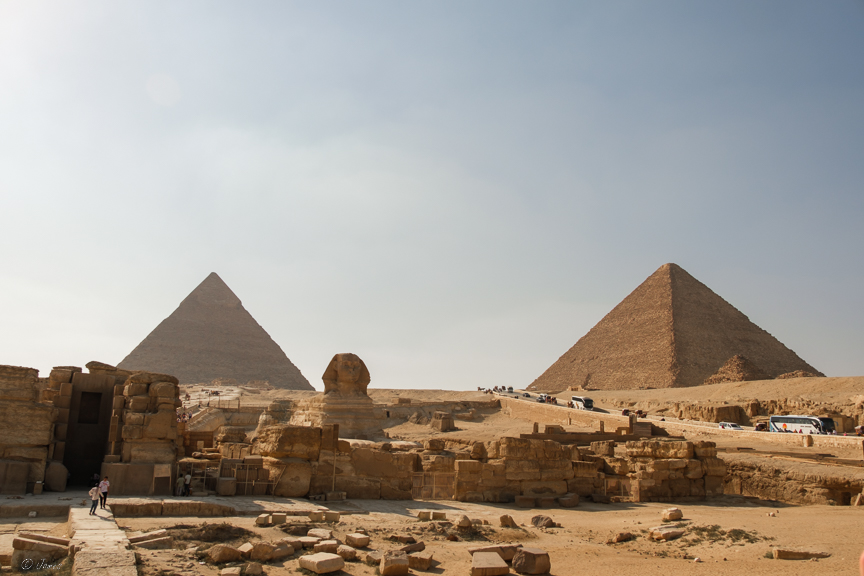
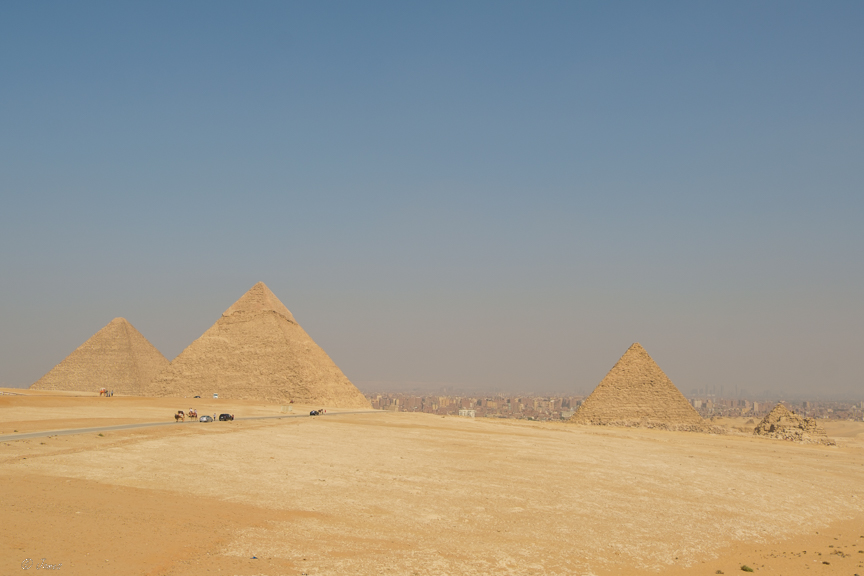

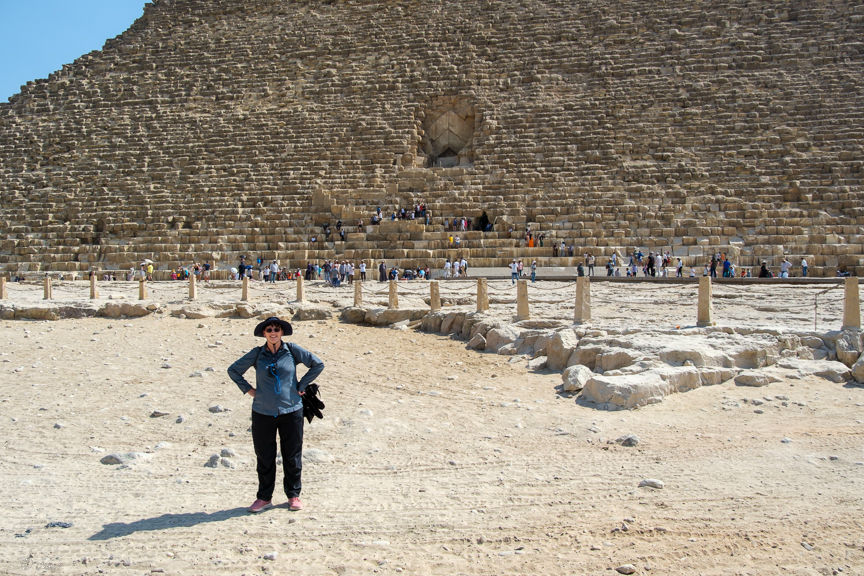
Khufu (Cheops)


